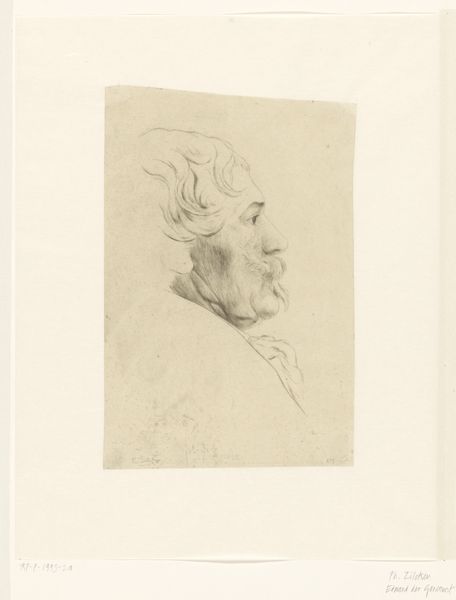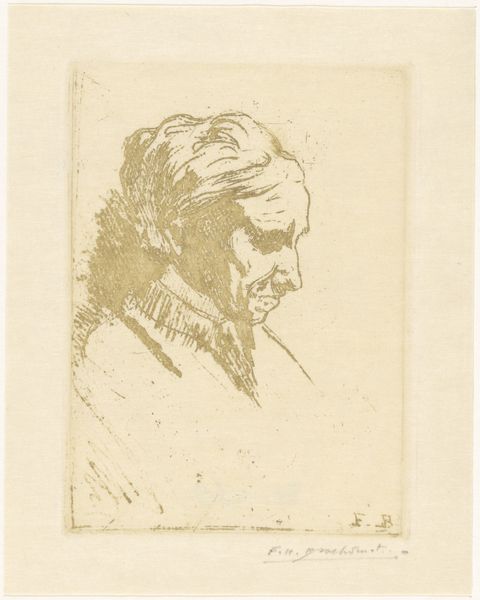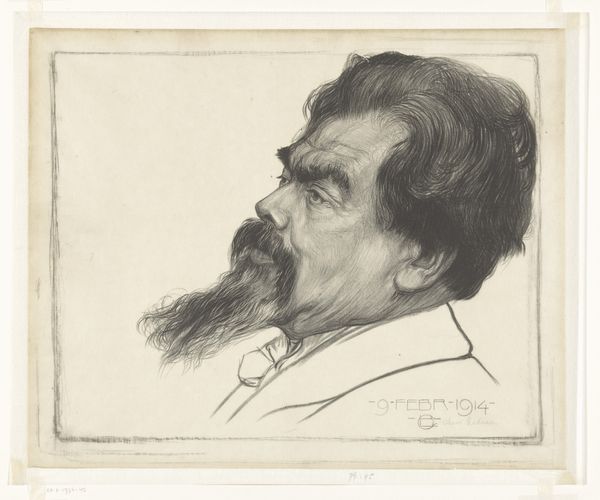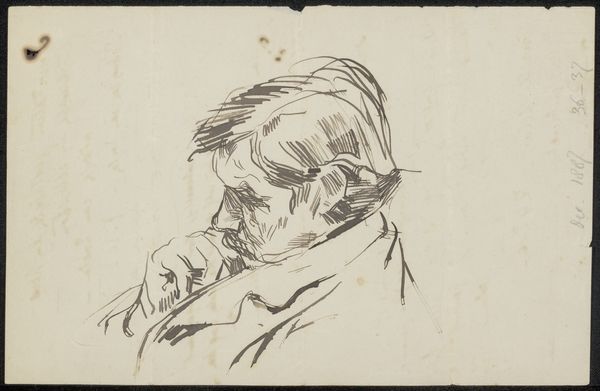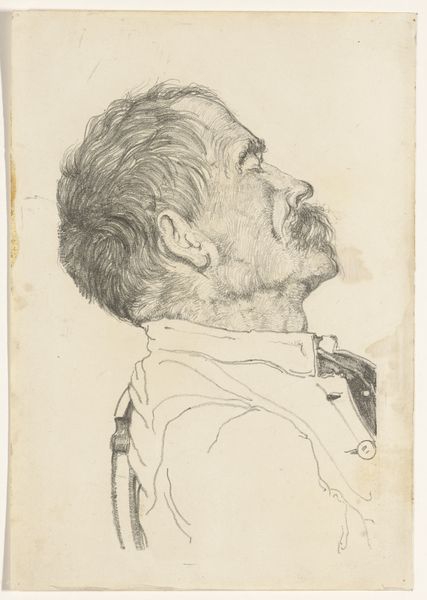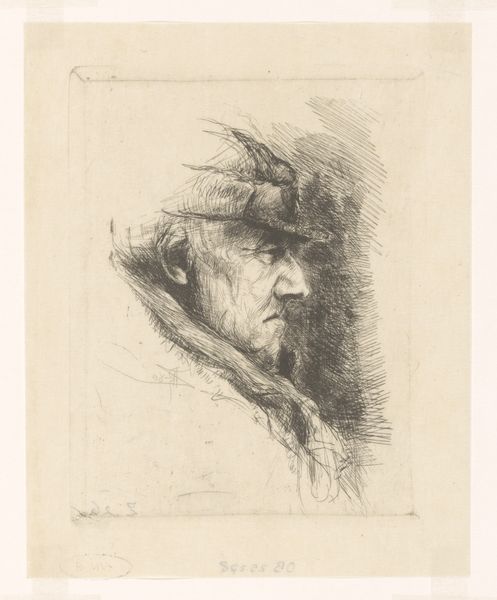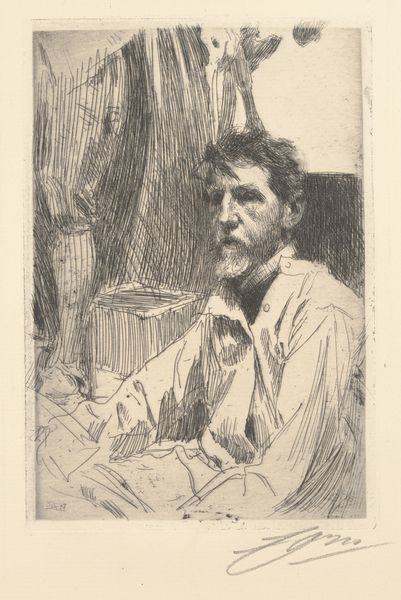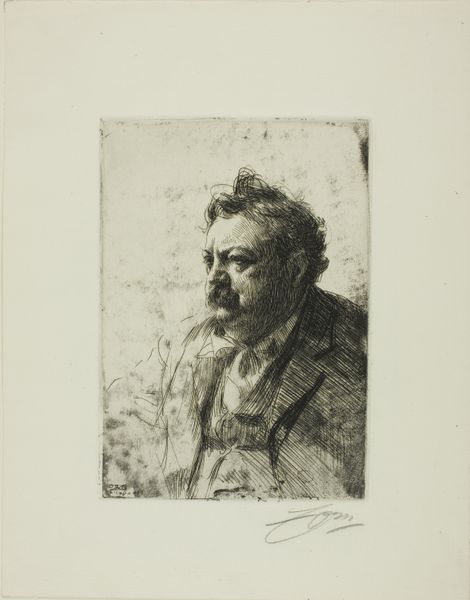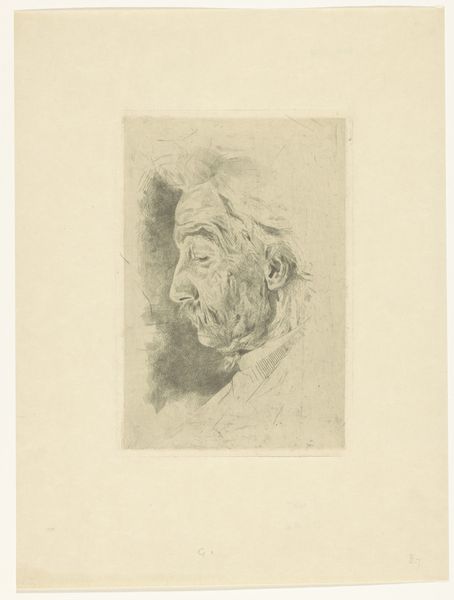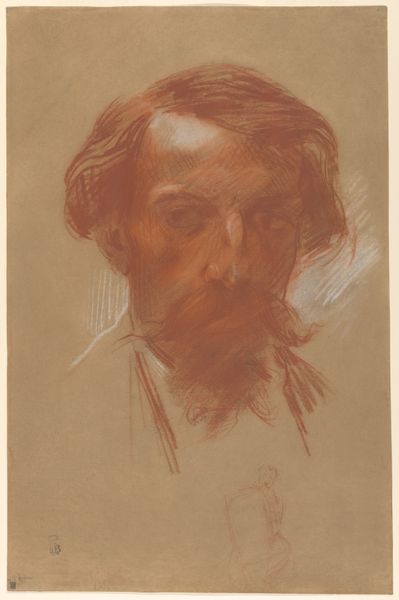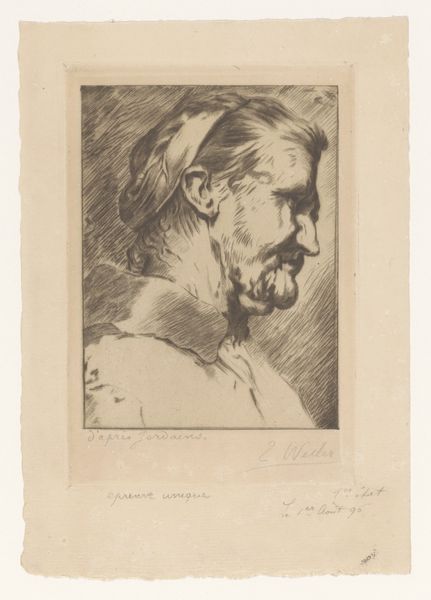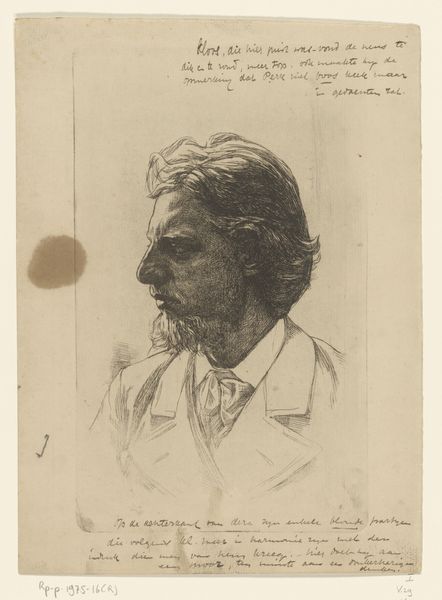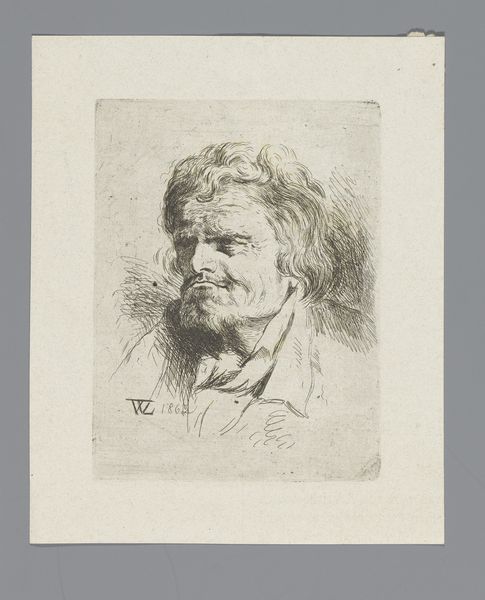
print, etching, ink, engraving
#
portrait
#
ink drawing
# print
#
pen sketch
#
etching
#
ink
#
engraving
Dimensions: height 296 mm, width 226 mm
Copyright: Rijks Museum: Open Domain
Editor: This is Hermanus Josephus Wolff's "Portret van Jan Toorop," created sometime between 1886 and 1934. It's a striking portrait done with etching, engraving, and ink – all those lines create such a tangible texture. What do you make of this piece? Curator: Looking at Wolff's portrait, I'm drawn to consider not only the image itself but also the labor and processes involved in its making. The choice of etching and engraving, reproductive technologies, suggests an intention to circulate and distribute this image of Toorop to a wider public, embedding it into popular visual culture of the time. The act of engraving and etching requires specific skills and tools – how do these techniques influence the final image? Does it change how we view the artist and subject? Editor: That's a great point! The meticulousness of the engraving process, repeated across prints, emphasizes a certain reproducibility. Do you think the decision to create a portrait this way says something about the social status of artists or the art market at that time? Curator: Absolutely. Consider the materials – the metal plates, the inks. Their cost and accessibility dictate who could even produce such works. The “original” becomes less significant than its iterations, disrupting the aura surrounding unique art objects. Editor: I see what you mean! It brings into question the definition of the original artwork versus its copies. Curator: Exactly. Think about it: How does this mass production change our appreciation of craftsmanship versus artistry? Also, this image's proliferation and consumption through printed matter influences not only art but also other spheres like social representation or political discourse! Editor: It’s interesting to consider the labor involved in its creation versus the distribution and how the art industry functions around them. I'll never see portraits quite the same way again. Curator: Hopefully, it helps understand that even something that might be overlooked or small as it looks, is full of information on its material status and process!
Comments
No comments
Be the first to comment and join the conversation on the ultimate creative platform.
